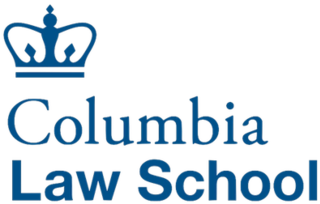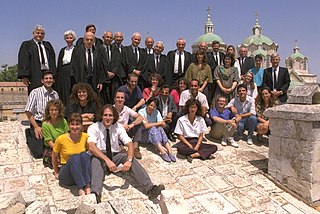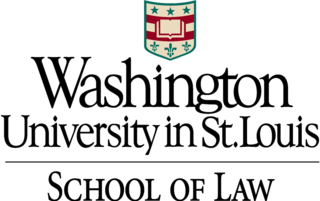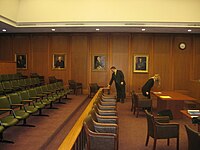
A lawyer is a person who practices law. The role of a lawyer varies greatly across different legal jurisdictions. A lawyer can be classified as an advocate, government lawyer, attorney, barrister, canon lawyer, civil law notary, counsel, counselor, solicitor, legal executive, or public servant — with each role having different functions and privileges. Working as a lawyer generally involves the practical application of abstract legal theories and knowledge to solve specific problems. Some lawyers also work primarily in advancing the interests of the law and legal profession.

A Juris Doctor, Doctor of Jurisprudence, or Doctor of Law (JD) is a graduate-entry professional degree in law. The JD is the standard degree obtained to practice law in the United States, where there is no undergraduate professional law degree. Some jurisdictions, such as Australia, Canada and Hong Kong, offer both the JD and undergraduate qualifying law degrees.
An attorney at law in the United States is a practitioner in a court of law who is legally qualified to prosecute and defend actions in court on the retainer of clients. As of April 2011, there were 1,225,452 licensed attorneys in the United States. A 2012 survey conducted by LexisNexis Martindale-Hubbell determined 58 million consumers in the U.S. sought an attorney in the last year and that 76 percent of consumers used the Internet to search for an attorney.

A law school in the United States is an educational institution where students obtain a professional education in law after first obtaining an undergraduate degree.

Legal education is the education of individuals in the principles, practices, and theory of law. It may be undertaken for several reasons, including to provide the knowledge and skills necessary for admission to legal practice in a particular jurisdiction, to provide a greater breadth of knowledge to those working in other professions such as politics or business, to provide current lawyers with advanced training or greater specialisation, or to update lawyers on recent developments in the law.

Admission to the bar in the United States is the granting of permission by a particular court system to a lawyer to practice law in the jurisdiction. Each U.S. state and jurisdiction has its own court system and sets its own rules and standards for bar admission. In most cases, a person is admitted or called to the bar of the highest court in the jurisdiction and is thereby authorized to practice law in the jurisdiction. Federal courts, although often overlapping in admission standards with states, set their own requirements.

Columbia Law School (CLS) is the law school of Columbia University, a private Ivy League university in New York City. It was founded in 1858 as the Columbia College Law School. The university was known for its legal scholarship dating back to the 18th century. Graduates of the university's colonial predecessor, King's College, include such notable early-American legal figures as John Jay, the first chief justice of the United States, and Alexander Hamilton, the first Secretary of the Treasury, who were co-authors of The Federalist Papers.
Bachelor of Laws is an undergraduate law degree in the United Kingdom, Europe and most common law jurisdictions. It is awarded by universities in Europe, Australia, the People's Republic of China, Hong Kong S.A.R., Macau S.A.R., Malaysia, Bangladesh, India, Japan, Pakistan, Uganda, Kenya, Ghana, New Zealand, Nigeria, Singapore, South Africa, Botswana, Israel, Brazil, Tanzania, Zambia, and other jurisdictions.

Stanford Law School (SLS) is the law school of Stanford University, a private research university near Palo Alto, California. Established in 1893, Stanford Law had an acceptance rate of 6.28% in 2021, the second-lowest of any law school in the country. Since October 2023, Robert Weisberg has served as its dean.

The University of Georgia School of Law is the law school of the University of Georgia, a public research university in Athens, Georgia. It was founded in 1859, making it among the oldest American university law schools in continuous operation. Georgia Law accepted 14.83% of applicants for the Class entering in 2022.
A Master of Laws is an advanced postgraduate academic degree, pursued by those either holding an undergraduate academic law degree, a professional law degree, or an undergraduate degree in a related subject. In most jurisdictions, the LL.M. is the advanced professional degree for those usually already admitted into legal practice.
A bar examination is an examination administered by the bar association of a jurisdiction that a lawyer must pass in order to be admitted to the bar of that jurisdiction.

A law clerk, judicial clerk, or judicial assistant is a person, often a lawyer, that provides direct counsel and assistance to a lawyer or judge by researching issues and drafting legal opinions for cases before the court. Judicial clerks often play significant roles in the formation of case law through their influence upon judges' decisions. Judicial clerks should not be confused with legal clerks, court clerks, or courtroom deputies who only provide secretarial and administrative support to attorneys and/or judges.

Southwestern Law School is a private law school in Mid-Wilshire, Los Angeles. It is accredited by the American Bar Association and enrolls nearly 1,000 students. Its campus includes the Bullocks Wilshire building, an art deco National Register of Historic Places landmark built in 1929. Southwestern is an independent law school with affiliation to the undergraduate program at California State University, Northridge.

A law school is an institution or professional school specializing in legal education, usually involved as part of a process for becoming a judge, lawyer, or other legal professional within a given jurisdiction.
An admission to practice law is acquired when a lawyer receives a license to practice law. In jurisdictions with two types of lawyer, as with barristers and solicitors, barristers must gain admission to the bar whereas for solicitors there are distinct practising certificates.

The Washington University School of Law (WashULaw) is the law school of Washington University in St. Louis, a private research university in St. Louis, Missouri. Founded in 1867, the law school was originally located in downtown St. Louis, and relocated in 1904 to the Danforth Campus of Washington University in St. Louis.
Legal education in the Philippines is developed and offered by Philippine law schools, supervised by the Legal Education Board. Previously, the Commission on Higher Education supervises the legal education in the Philippines but was replaced by the Legal Education Board since 1993 after the enactment of Republic Act No. 7662 or the Legal Education Reform Act of 1993.

The University of Arkansas School of Law is the law school of the University of Arkansas in Fayetteville, Arkansas, a state university. It has around 445 students enrolled in its Juris Doctor (J.D.) and Master of Law (LL.M) programs and is home to the nation's first LL.M in agricultural and food law program. The School of Law is one of two law schools in the state of Arkansas; the other is the William H. Bowen School of Law.












